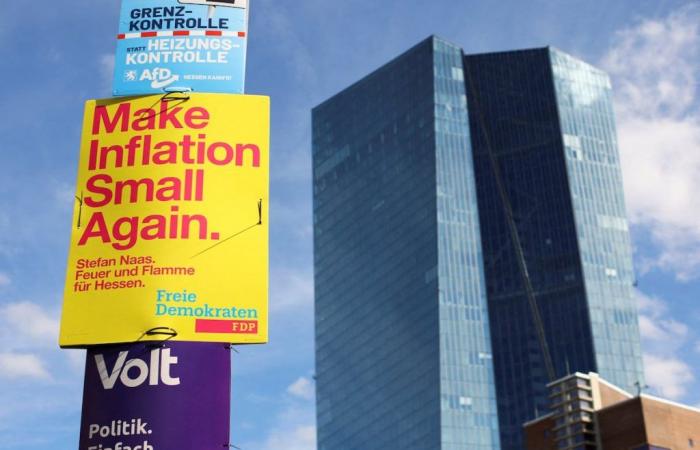After the recent lowering of intervention rates by the European Central Bank (ECB), it seems reasonable to reflect on the final level of these rates once the interest rate normalization process is completed, since the normal and orthodox is that the rates are positive, it being historically exceptional that the rates were negative. Once this possible future level of short-term interest rates has been determined, we will analyze what the reasonable and consistent level for long-term bonds could be.
Assuming the ECB deposit rate as a reference, since it is the one that sets the level of the interbank market (Euribor), previously at 4% and now at 3.75%, we would have to calculate what the real profitability of that type is. of interest. If we accept the latest ECB inflation projections (2.3% in 2024 and 2% in 2025) and subtract it from the current deposit rate, we see that the real profitability would be 1.45% in 2024 and 1.75 % by 2025. These are clearly restrictive levels for an economy that is expected to grow at 0.6% in 2024 and 1.5% in 2025, also in accordance with the latest ECB projections.
Once inflation has stabilized and the risks of a rebound have been overcome (probably in 2026), a neutral monetary policy – neither restrictive like the current one, nor expansive like the past zero or negative rates – should keep rates at levels close to the CPI. Our bet would be on levels between 1.5% and 2%, so there would still be a long downward path for the ECB. However, the 3-month Euribor futures, which is the projection made by the market, maintain them at levels of 2.5% until 2027. Time will tell who was right.
Accepting our projection of normalized rates under a neutral monetary policy (range 1.5%–2%), we will analyze what long-term slope or premium should be paid by the reference government bond in the euro, the German one with maturity at 10 years. We review what that premium has been in the 25 years of the euro’s existence, and we see that most of the time it has been between 100 and 200 basis points above, which would give us a level for the 10-year German bond of between 2.5% and 3% taking the most conservative premium.
It also seems reasonable that after having seen inflation rebound so strongly in 2021 and 2022 (when it was considered to have disappeared a few years before), long-term bonds are required to have returns that can partially cover that risk. However, in the market this bond is quoted at yield levels of 2.5%, absolutely limiting the possibilities of a fall in the long-term yields of bonds in euros, both of governments and companies, since they are all quoted, depending on of its rating, with a margin above the German bond for the same term. Consequently, we see investment in euro bonds with maturities of less than 2 or 3 years as more attractive than those with longer-term maturities, especially those of 10 or more years.
Why is it worth talking so much about interest rates? Because when a cycle of rate cuts begins, a virtuous circle is generated for the economy and, consequently, for financial assets. By lowering rates, the obvious consequence is that the indebted, be they governments, companies or families, begin to pay less for their debts. This frees up their economic capacity to spend more or invest more, which generates more employment and more economic growth, a situation that leads to greater benefits for companies and greater revenue for governments. In this way, companies can distribute more dividends and governments reduce debt, although the latter usually choose to spend more. In the short term this policy can generate more growth but in the long term it is not at all virtuous, since the reasonable thing is to reduce deficit and debt to have more room for maneuver when a recession hits.
Furthermore, lowering rates boosts the demand for new credit, for consumption or investment, generating more growth and more employment, and therefore more profits and more revenue. Another positive factor is that with lower rates, bank defaults and bankruptcies decrease significantly, so the banks’ willingness to lend improves, boosting economic activity. Finally, with lower long-term returns, bonds and stocks rise in price, as the companies’ future earnings discounted at lower rates give us a higher valuation for the companies.
The frequent changes in interest rate expectations (we started the year expecting six drops in 2024 and now only two are expected) and their consequences on the price of financial assets, force active fund managers to permanently adjust portfolios , since attractive returns in the medium term largely depend on this agility to adapt to new circumstances
Hernán Cortés, fund manager and founder of Olea Gestión
Follow all the information Five days in Facebook, x and Linkedinor in our newsletter Five Day Agenda
Newsletters
Sign up to receive exclusive economic information and the financial news most relevant to you
Sign up!






